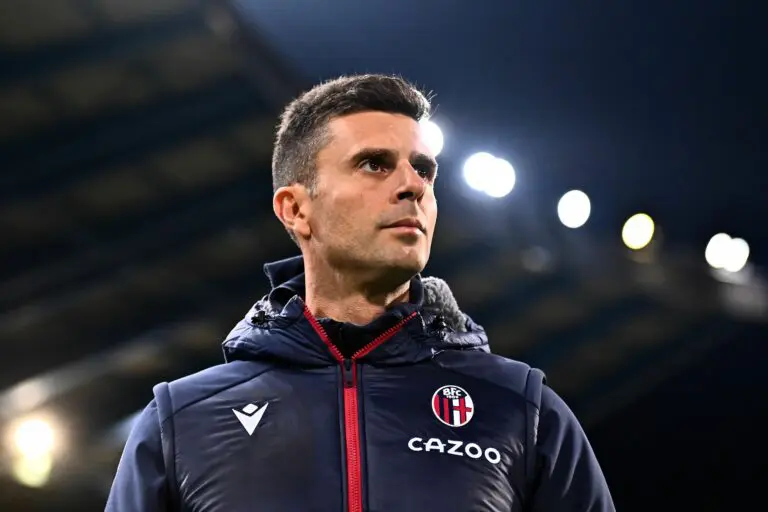When the appointment of the former Bologna coach as Allegri's successor was made official on June 12th, it became clear to everyone that Juventus was launching a new project.
The first step had already begun with the Juventus Next-gen project. Juventus was one of the most active teams during the transfer window, but yesterday they made their debut on the pitch with a 3-0 home victory against newly-promoted Como.
Let’s take a closer look at how they did it.
First, let's take a look at Juventus' starting lineup.
Among the new signings, Thuram and Cabal were immediately placed in the starting eleven. Mbangula, on the other hand, was promoted from Juventus Next Gen.
On paper, it was a 4-2-3-1 formation. However, during different phases of the match, this always looked different.
Let's start with the buildup phase.:
Throughout the entire match, Juventus didn’t have to face any significant pressure.
In the first phase, and sometimes at the beginning of the second phase, the buildup was in a 4-2 shape. At this stage, Cambiaso was still positioned by the touchline, maintaining the width.
In the second and third phases, this back five/six shifted into a 3-2 buildup.
Cambiaso moved into midfield, usually positioning himself next to Thuram and below Locatelli, though at times Locatelli stayed in the double pivot, and Cambiaso played in the half-space.
Now let's take a look at Juventus' approach in the attacking third.
They used a basic 3-2-5 formation, but it wasn’t as static as, for example, Barcelona's under Xavi's management.
This approach is characteristic of Motta’s style of football—filling the right positions is essential, but it doesn’t really matter who occupies them. As a result, there is a lot of positional rotation.
This was even more evident at Bologna, but over time, it will likely emerge at Juventus as well. For now, the basics need to be established first.
But what was the method they used to create numerical and qualitative superiority?
The first method—as seen in the image—was the continuous overload on the left side. This was achieved in two ways: either Cambiaso drifted over to the left (which was rare), or more commonly, Cabal moved behind Mbangula. This resulted in three players positioning themselves in a small area (Cabal, Mbangula, Yildiz).
This strategy could result in two outcomes.:
Either the left-sided combination play was successful, as seen in Vlahovic’s disallowed goal, or Weah was isolated and could take on his defender one-on-one. Although this might have seemed less frequent, it was likely because Weah’s dribbles weren’t successful.
Nevertheless, the goals ultimately came from transitions or long-range shots.
Now let's take a look at their play without the ball.
Surprisingly, the team spent a significant amount of time in a mid-block during the match. This was either in a 4-4-2 or 4-1-4-1 formation, depending on Yildiz and Thuram’s positioning. The two of them were often very man-oriented.
The team occasionally pressed aggressively in specific moments.
This trigger was usually a backward pass to the opponent's left center-back. At this moment, Weah would press the ball carrier, Cambiaso would close down the left-back, Gatti would mark the wide attacker, and Locatelli would track the advancing central midfielder.
This is why Locatelli was one of the most important players of the match. He won a lot of balls by leveraging his physical superiority.
Overall:
Juventus, compared to Motta’s Bologna, appeared quite static, but this is still the foundation. They need to master the basics. After Allegri, this is a significant change, and the squad isn’t fully ready yet. They still need a skilled winger (in my opinion), and Douglas Luiz will also integrate into the team.
However, they secured the three points, and the start wasn’t bad, despite the very weak opponent.






















Comments